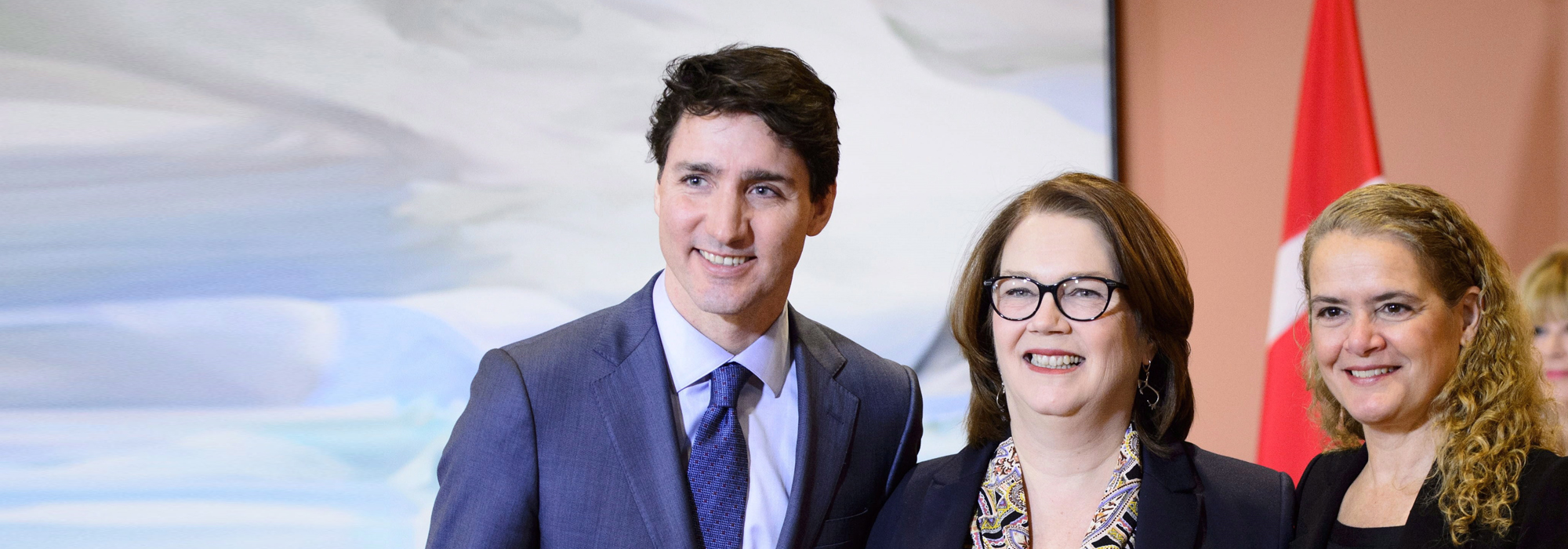
Following Scott Brison’s retirement from federal politics in January, Prime Minister Trudeau appointed Jane Philpott to replace him as Canada’s second minister of digital government (in addition to her other day jobs as president of the Treasury Board and member of Parliament). A new appointment offers opportunities to advance fresh priorities and reflect on progress that has or has not been made. As Minister Philpott is being briefed, we want to share some insights from our research on digital government initiatives under way in the federal government and in Canada’s Westminster peer countries.
The first insight is on the importance of courageous leadership. Time and time again, the public servants we’ve spoken to underscore that innovation in digital government hinges on leadership from their minister’s office. Ministers need to provide political cover for novel and untested initiatives, need to educate their cabinet colleagues about the importance of digital reforms to the success of their policy initiatives and need to provide the top-down directives and funding allocations that ensure digital government initiatives are scaled up and sustained. Ministers need to be vocal and public about moving the digital transformation agenda forward through concrete deliverables: real projects and programs, not just buzzwords.
Successful digital government will be driven by a federal public service with the right mix of skills in its ranks.
Second, looking to Westminster comparators, it is clear that Canada needs to move faster and deeper on public service upskilling. The Minister and public servants who read this will undoubtedly nod their heads and point to ongoing efforts to address the federal digital skills gap. Code for Canada and the Canadian Digital Service are bringing tech talent into government, and the Canada School of Public Service has recently launched the ambitious new Digital Academy. But more needs to be done, and sooner. Successful digital government will be driven by a federal public service with the right mix of skills in its ranks and will particularly depend on the government attracting staff who are proficient in areas such as design, agile software development and data science.
The UK government is farther along than Canada in building its base of tech talent. Policy-sector-specific digital teams are cropping up in its various ministries. This is a potentially powerful means of better integrating digital tools and approaches into the policy work of departments, and the Minister could champion this model in Canada’s federal government. This work will rest in part on the Minister loosening prohibitive rules for federal government interchange programs intended to facilitate staff exchanges between the private and public sectors; the present rules can make it far too complicated and time consuming for departments to recruit private sector technologists interested in working in government for time-limited assignments (known as “tours of duty”).
Third, the Minister needs to understand that digital government is less about technology per se and more about culture and basic approaches to problem solving. In particular, digital government has revealed the importance of bringing a deep understanding of user needs to government work. This understanding should be generated through small-scale experiments that allow public servants to see how users will actually interact with a service before it is launched at scale. These experiments may not even point to new technology as the solution; think digital approach, not digital tools. For example, research into users’ experiences with a service could reveal the need for different opening hours at a service centre, or a language change in a program’s description. These small changes might pay dividends in improving the uptake and impact of a government program.
The Minister should look to seize opportunities to better integrate digital into broader policy renewal work already under way.
Fourth, the Minister should look to seize opportunities — ones that arguably have been partly overlooked by Canada’s Westminster counterparts — to better integrate digital into broader policy renewal work already under way. The federal Policy Community initiative is a long overdue investment in the folks who do policy in Ottawa. It is imperative that the Minister and other senior executives see the interconnections between those leading on digital transformation and those leading on policy renewal more generally. Effective policy work requires digital skills and approaches, and digital transformation requires policy expertise and know-how, not just user research.
In particular, digital tools and approaches must be better embedded earlier in the policy process. Most in and around government know all too well the barriers to effective policy formulation: data are not captured, are of poor quality or can’t be combined effectively with other data; feedback loops between various stages of the policy process are weak or non-existent; policy analysts lack the time and resources to think deeply and creatively about long-term policy challenges; there is little appetite in the system to experiment with riskier, untested approaches. Digital tools and approaches have much to offer the policy community as they tackle these challenges. However, in part because service delivery is the point where user feedback can be incorporated most directly, and where experimentation can be rolled out quickly, most digital reforms have been limited to that level across Westminster systems. While Canada has been comparatively late to the digital government game, it could emerge as a global leader by better integrating digital approaches and tools into policy development well before service delivery considerations are on the table.
To be sure, we are not suggesting that digital is a silver bullet for the challenges facing today’s policy-makers. More than most people, ministers know that making policy involves tough decisions and balancing a range of inputs — some data and evidence driven, and others predicated on values, legal opinions and political calculations. There are limits to user data, iteration and experimentation, and some policy challenges are ill-suited to digital approaches. Nonetheless, success on the digital file increasingly equates with successful governance more generally. In this sense, with her new mandate as minister of digital government, Jane Philpott is in a position to have immense influence over the workings of the federal government. We hope our insights are helpful in guiding her — and the public service more generally — in this challenging but essential work.
This article is part of the Wiring Public Policy for Digital Government special feature.
Photo: Prime Minister Justin Trudeau, Treasury Board President Jane Philpott and Gov.-Gen. Julie Payette attend a swearing in ceremony at Rideau Hall in Ottawa on Monday, Jan. 14, 2019. THE CANADIAN PRESS/Sean Kilpatrick
Do you have something to say about the article you just read? Be part of the Policy Options discussion, and send in your own submission. Here is a link on how to do it. | Souhaitez-vous réagir à cet article ? Joignez-vous aux débats d’Options politiques et soumettez-nous votre texte en suivant ces directives.








